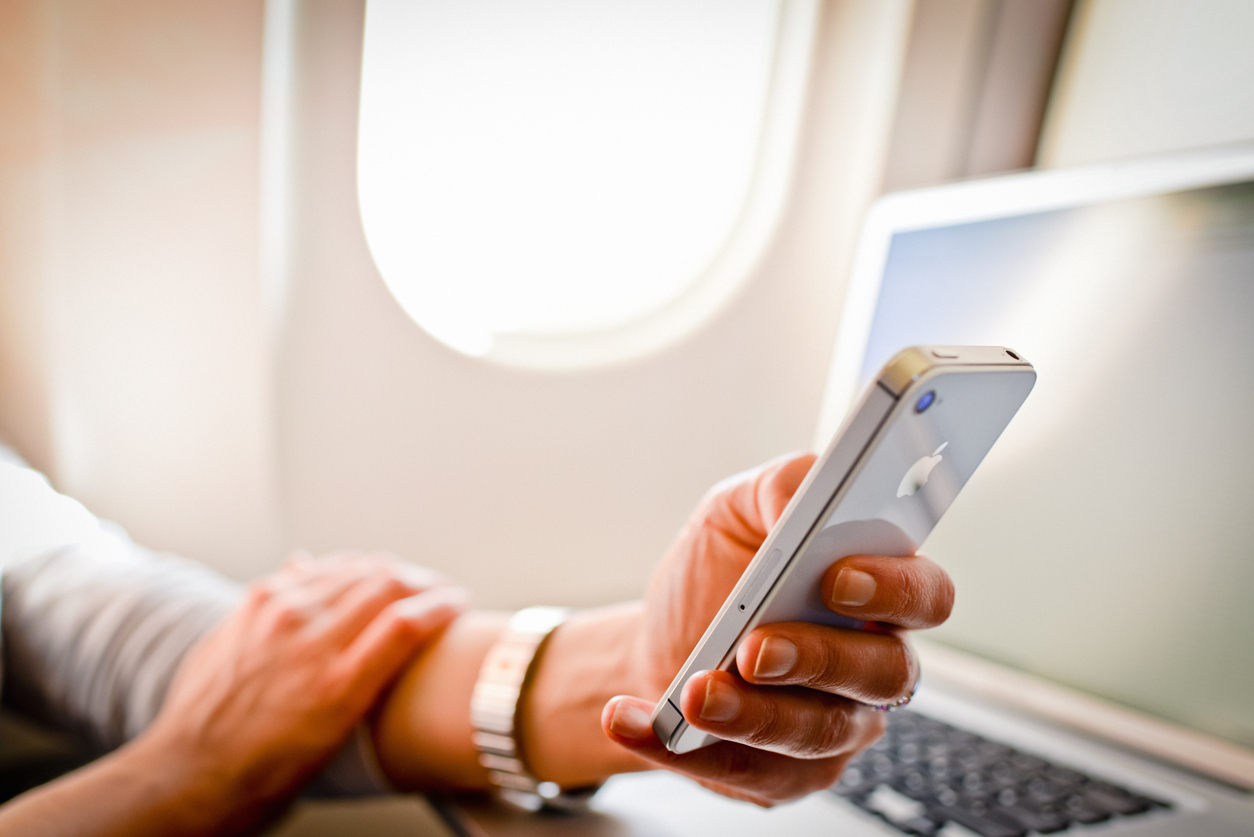Airlines and private jet companies have always understood the importance of in-flight entertainment and media services, however with passengers, both business and pleasure, requiring more and more connectivity the subject becomes even more essential.
The trend is moving towards eliminating seat-back entertainment systems to allow passengers to use their own devices for streaming in-flight entertainment. The perfect solution? Perhaps not as it is raising eyebrows among travelers, however.
Here are a few pros and cons of the newly coined BYOD (bring your own device) airplane streaming option.
Pros of Streaming In-flight Entertainment
Cost savings to the airline
According to the Wiglaf Journal, airlines can save up to $90,000 per plane per year in fuel savings alone. The urban legend of a former American Airlines CEO saving over $100,000 a year by removing a single olive from each salad may or may not be true, and yet is an example of just how cost-conscious aviation executives need to be in order to save money. Although fuel costs have stabilized in recent years, fuel is still one of the highest costs any aircraft must endure.
In the end, much of cost savings comes down to weight. Airlines have already added baggage fees, in some cases even for carry-ons. The loss of seat-back entertainment systems is a huge weight loss for an aircraft. Air New Zealand recently figured that, in addition to the loss of initial pricing, at nearly seven pounds per unit it is an enormous incentive for airlines to eliminate them and move towards streaming in-flight entertainment options.
Passenger ability to switch between work and pleasure
Everyone has a tablet these days, right? And an iPhone, and probably a laptop. Over 80% of business, and vacation, travelers carry at least one device when flying. As more airlines contemplate changing to plane-wide streaming of in-flight entertainment, passengers can effortlessly switch between business and pleasure.
Business travelers can write a meeting proposal, arrange lodging, or email associates all while still checking social media and checking on the best restaurant at their destination. For vacationers, the appeal is even greater with the ability to message Facebook friends, Instagram their dinner, and find directions to their hotel. All-in-all, a win for customer service.
Entertaining the passenger on a crowded flight is key
The pros in aviation know that more entertainment options available can make even the longest flight feel relatively short. With many flights able to offer 100 movie choices, along with the normal music and game channels, regardless of the length of a flight, the time can speed by at record pace. More advanced systems can advise the passenger if they will have enough time to view their entertainment choice before landing.
Airlines and private jet companies alike recognize, even if not out-loud, that for an industry that has largely eliminated the perks of flying such as blankets, free meals, and free baggage, they need to keep customers happy in other ways. WiFi, expanded programming options, and the ability to use your own device for easier viewing all score big with consumers.
Cons of Streaming IFE

Consumer savvy passengers will expect to benefit
In a low-margin industry cost cutting is, of course, extremely beneficial to airlines and private aircraft alike. Where they might miss the trick is in underestimating their client base. The demanding, click-driven, clientele of today expect value for their money. While millennials are all about experiences over acquisitions, they are unwilling to feel cheated. For an aviation industry bent on saving a penny, know that the travelers of today may very well expect to see savings passed on to them in regards to lower ticket prices.
In addition to desiring worthwhile experiences travelers enjoy unique experiences. Business and commercial aviation are no longer just about getting from here to there. Brands will want to establish a distinct personality. This, along with stellar customer service and a unique approach, will help them find a loyal following.
What about the 20% of passengers without their own device?
Here is the kicker. Airlines and private aircraft are working hard to cut weight and costs, simplify processes, and cater to the majority, but what happens to the minority forced to deal with no frills service and the absence of in-flight entertainment? Airlines have regularly spent billions annually providing in-flight programming for passengers.
Cramped quarters and lack of other amenities create an even greater need for making the time go faster. The answer? Traditional thought has had airlines with seat-back entertainment going after well-heeled passengers while thrifty passenger veer towards streaming in-flight entertainment options. But perhaps a hybrid response is the answer.
The majority do, in fact, carry personal devices with them. Thus airlines offering the WiFi approach could offer devices to rent, or on loan, for those traveling without their own. This dual system results in a cost-cutting move for airlines, all while not creating a significant loss of entertainment services.
The Future of Connectivity
There are absolutely pros and cons to each outlook. Airlines can stand to make hefty revenues when passengers are able to buy food, drinks, and entertainment from their seat.
Other airlines moving to the streaming in-flight entertainment approach can experience less operating capital and significant weight reductions in addition to catering to the device-hungry millennial group of travelers. Some passengers will choose flights based on the in-flight entertainment options.
Aviation industry experts suggest more and more airlines will remove the heavy, and possibly outdated, seat-back systems. They will move to a flight-wide WiFi service and in-flight streaming systems as technology continues to improve. A small minority of passengers may object initially, but if progress has taught us anything, it is that this change and adaptability will move on in spite of protests to the contrary.
Aviation experts take note; each day brings a new way to approach customer care and cost savings.

